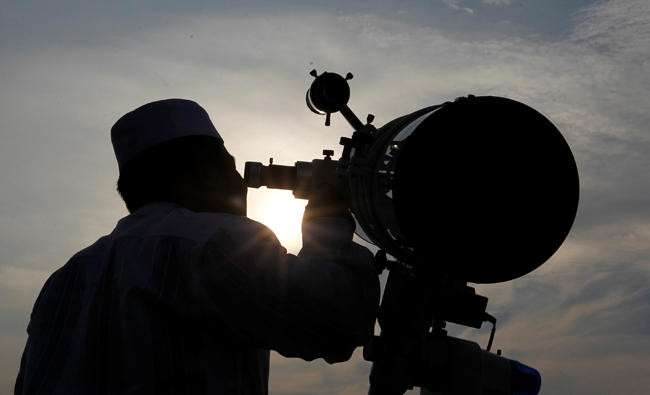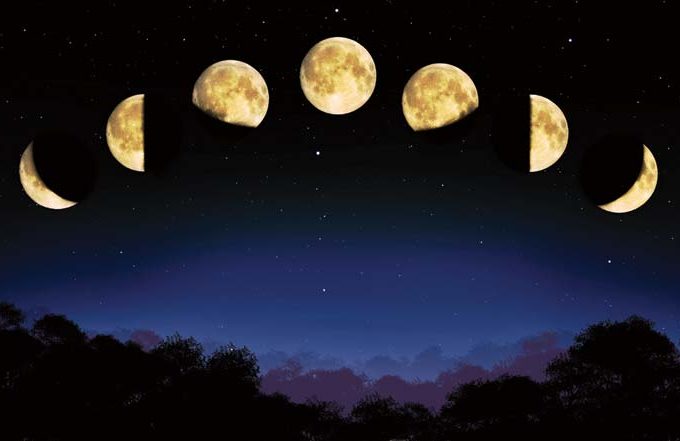In the ongoing, never-ending debate about moon sighting versus calculations to determine the start (and end) of Ramadan (and other Islamic months and holidays), Irfan Rydhan argues for the motion to support moonsighting: “Muslims Should Adopt Moon sighting to Establish Ramadan.” Please read to the end, where you will find a link for the rebuttal (in support of scientific calculations).
My Answer: Yes.
Why? Simply Because the Qur’an and Hadith tell us to. But at the same time there is a great spiritual benefit in looking for the Hilal (new crescent moon) with our eyes, which will be lost if we are to forgo this sacred tradition for the sake of convenience and so called “unity”!
Let’s begin by looking at what the Holy Qur’an says:
“The month of Ramadan is the one in which the Qur’an was revealed as a guidance for humanity and clarifications of that guidance and a standard. So whoever witnesses (shahida) the month among you, let him fast” (2:185).
Many Islamic scholars state that in the above verse the word “Month” here actually refers to the crescent moon of the month and was called “the month” (al-shahr) due to everyone knowing of its arrival.[1]
The Prophet Muhammad (Peace Be upon Him), clarified this further in the following Hadith:
Narrated by Abu Hurayrah:
The Messenger of Allah (peace_be_upon_him) made a mention of the new moon and (in this connection) said: Observe fast when you see it (the new moon) and break fast when you see it (the new moon of Shawwal), but when (the actual position of the moon is) concealed from you (on account of cloudy sky), then count thirty days.
There are many narrations of this same Hadith, which very clearly states that we Muslims should go out to witness (see with our own eyes) the Hilal (visible crescent moon) to start the Islamic months – in this case the month of fasting: Ramadan.
Since the Lunar months are either 29 or 30 days, we are only allowed to “calculate” if on the 29th day of the previous month (in this example the month of Shaba an), we cannot see the Hilal due to an overcast and cloudy sky which blocks our view.
Some people may ask, “We all know the new moon is there, and we now know (with current technology) when exactly the new moon will be “born”, etc. so why can’t we just calculate the whole Islamic calendar in advance?”
First, some definitions are needed:
Hilal, an Arabic term, refers to the bright waxing crescent when it becomes visible to a normal observer by naked-eye.[2]
The “New Moon” is a modern astronomical term. It refers to the completely invisible moon at the start of a synodic cycle (29 days 12 hours, 42 minutes and 2.8 seconds).[3]
This “new moon” occurs when the Moon, in its monthly orbital motion around Earth, lies between Earth and theSun, and is therefore in conjunction with the Sun as seen from Earth. At this time, the dark (unilluminated) portion of the Moon faces almost directly toward Earth, so that the Moon is not visible to the naked eye.[4]
Often Muslim and non-Muslim experts alike confuse astronomical “New Moon” for “Hilal”. During the time of the Prophet Muhammad (S), the Arabic language had only “Qamar” (Moon), and Hilal (Visible crescent moon) terms. It had no word for the astronomical New Moon. Thus, both the Qur’an and Sunnah instruct Muslims to start the lunar months after visually seeing the new crescent moon (hilal) with their naked eyes. No fancy telescopes, binoculars or other equipment are needed.

Now, let’s put aside these verses of the Holy Qur’an and Hadith for a moment, and look at it this question from a more universal view.
Human beings have 3 components: Physical, Intellectual and Spiritual. Most of us take care of the first two fairly well. We eat, exercise, study and excel in our school and careers. But unfortunately many of us, including myself, are lacking in our spiritual development.
All human beings whether they consider themselves “religious” or not, need some type of spiritual nourishment in their lives. Many people around the world, especially those people living in the “West”, with all the emphasis on science, technology and busy career oriented lives, are looking toward Eastern cultures which are more focused on family and spirituality. Many Westerners are employing many Eastern techniques such as Yoga, meditation, etc. to fill that spiritual void in their lives.
Muslims are no different. Although we have many rituals in our religion of Islam, which can help us to develop our spirituality, such as five daily prayers, fasting in the month of Ramadan, going on the pilgrimage to Mecca, etc. We still find ourselves sometimes feeling empty or missing something.
This is where the physical action of moon sighting prescribed by our religion can help us bridge that gap. When we go out to look for the Hilal with our own eyes, we are not only fulfilling a great Sunnah of the Prophet Muhammad (S), but we are also connecting with nature and the creations of Allah.
The article, republished with author’s kind permission and first published at Patheos.com is from our archive, originally published on an earlier date and highlighted here for its importance.

